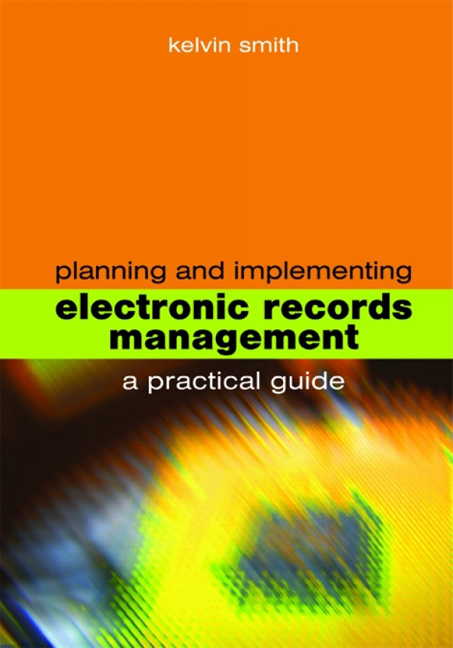14 - Training
from Part 3 - Implementation
Published online by Cambridge University Press: 08 June 2018
Summary
Training is the last, but no less essential, step in implementing the electronic records management system. This short chapter examines the key elements of training, concentrating mainly on delivery approaches. It presumes that some basic training – on records management principles and practices – has already been undertaken.
Procedural/technical training
User training will need to be a mix of procedural training – how the file plan works, naming conventions, disposal scheduling, etc. – and technical training – how the system functions. These are normally best undertaken together; indeed, they are probably inseparable in that a procedural understanding needs to be achieved by using the new system. Training should occur while installation of the new system is taking place so that users can immediately apply what they have learnt as soon as the system goes live.
There will be a practical problem that needs addressing and which will affect the programme or schedule of training that you will want to draw up – the availability of computers. Part of this is also the optimum number of attendees that will make the training sessions effective and worthwhile. Taking both these points into consideration, ten has generally been shown to be the best number for face-to-face training sessions.
A timetable of training sessions should be drawn up so that participants know well in advance when they will be expected to undertake the requisite training.
Delivery methods
Delivery should consist of a package of face-to-face/hands-on training and the provision of user manuals. It is generally not possible to train staff in one way without the other. In particular, user manuals are essential for later reference as well as being useful for those members of staff who may take longer than others in grasping training points in the hands-on forum. They can be provided in paper form or made available on an organization's intranet. User manuals, while focusing on the technical operation of the electronic records management system, should not be too technical themselves. They need to be understood by the average user, who will not have had any detailed technical training on, for example, the maintenance of computers or the structure of metadata schemes. The best user manuals use a combination of straightforward language, diagrams and screenshots.
- Type
- Chapter
- Information
- Planning and Implementing Electronic Records ManagementA practical guide, pp. 195 - 200Publisher: FacetPrint publication year: 2007



